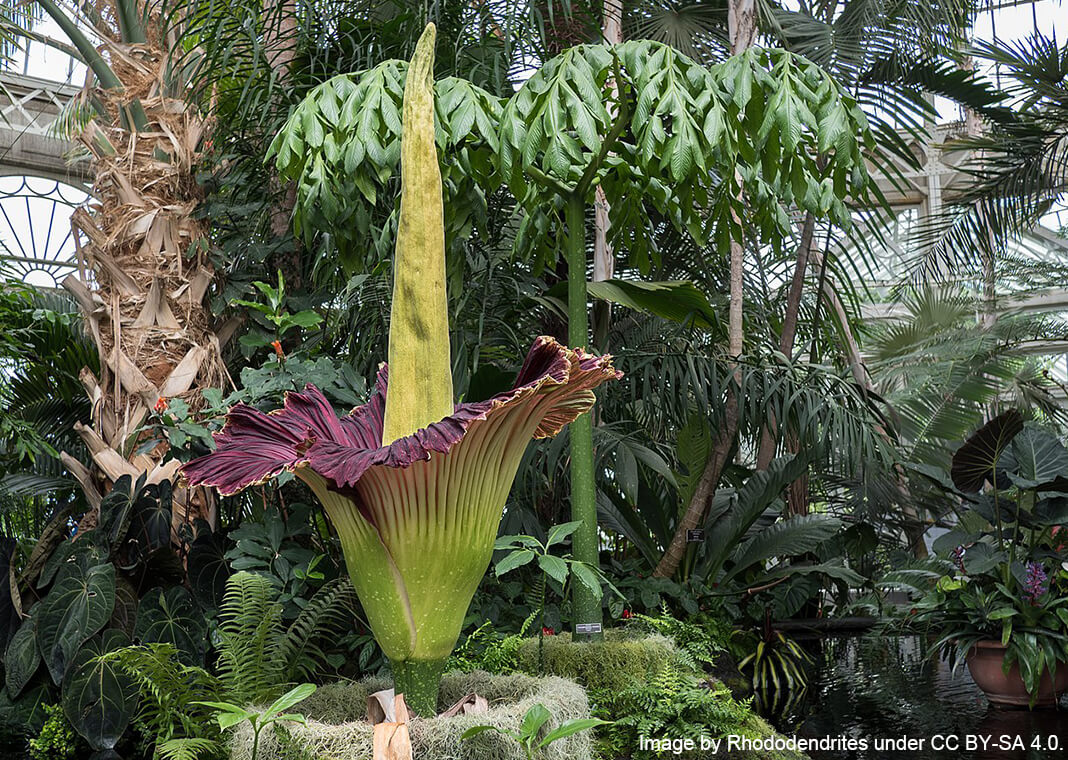
The corpse flower only blooms once every three to ten years. It’s very rare. Well, actually, the plant itself is not rare, just the bloom. That’s the part people wait in line to see. One needs a lot of patience to wait for this particular plant to bloom. Once it does, it’s a don’t-blink-to-avoid-missing-it experience. If one’s nose is open, however, a person will be well aware that the corpse flower has finally bloomed. Apparently, it stinks like rotting flesh.
I first learned about the corpse flower waiting in the carpool line of my oldest son’s school. It was just the two of us in the car, and he had been begging me to do Web searches on rare plants and animals every morning for two straight weeks, as we waited. Over and over again, he’d ask me to look up something he had just learned about through some online video or another. It was always something rare and unusual—and often quite creepy or smelly! Occasionally, I would chime in with, “Hey, kid, what if I just search for roly polies today?” or “Would you like to learn a little more about turtles?”
But he would always reply with the same question: “But, Mom, are they rare?”
My oldest son has never had any interest in the commonplace. He focuses most of his energy on what is rare. What always catches my attention, however, is the type of rare things on which he focuses. It’s not the rare plants, animals, or humans that are celebrated for their captivating beauty or their brilliant talents. Instead, it is those rare parts of creation that are most misunderstood. His searches never start with “most beautiful” or “most perfect” or “most scintillating.” Instead, he searches for “corpse flower” or “ugliest fish in the world.” (The blobfish gets that prize, by the way.) He searches exclusively for the misfits, the oddballs, and the outcasts and celebrates them for exactly what exiled them in the first place.
It’s something I love most about him, and it is something I hope never changes.
In many ways, I think he gets the Gospel message at age eight better than I do at 40. As I dive more into the Gospels through my work with the Spiritual Exercises, I am increasingly aware of how often Jesus sought out what society considered to be the misfits, the oddballs, and the outcasts of his time. Never once did Jesus stop to consider whether the people he encountered were worthy before he spoke to them, healed them, forgave them, or dined with them. He never stopped to consider whether they were worthy before he loved them. He celebrated what was unique about each person, because he knew the immense love that went into creating every person exactly as he or she is.
So what stops us from doing the same?
Later this month, I start my 20th year of teaching. I hope that this year I can be more attuned to the rare treasures this world has to offer both inside the classroom and outside of it. May we all remember through the example of my son and that of the Gospel that all are worthy and all are loved, ourselves included.
Image by Rhododendrites under CC BY-SA 4.0.

Thank you Gretchen. God saw all that He had made, and it was very good (Genesis 1:31).